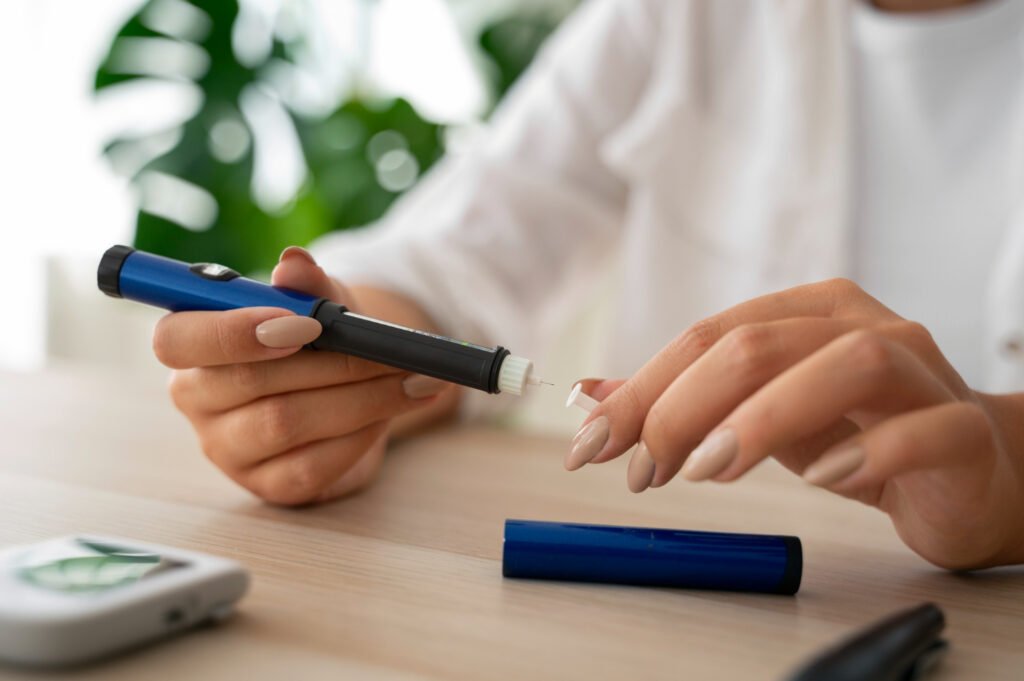
Overview
Imagine waking up one morning to find out you’re on the borderline of developing diabetes. It’s a wake-up call that no one wants, but for millions of people worldwide, it’s a reality. Prediabetes, a condition where blood sugar levels are higher than normal but not yet high enough to be classified as type 2 diabetes, is a serious concern. The good news? Prediabetes can be managed and even reversed with the right lifestyle changes—starting with what’s on your plate. Let’s explore how a well-planned diet can help you take control of your health and keep diabetes at bay.
The Importance of a Prediabetes Diet
Prediabetes doesn’t just happen overnight. It’s often the result of poor dietary habits, lack of physical activity, and sometimes genetics. If left unmanaged, it can progress into type 2 diabetes, a chronic condition that can lead to severe health complications like heart disease, kidney damage, and vision problems. But the story doesn’t have to end this way. By making smart dietary choices, you can stabilize your blood sugar levels and significantly reduce your risk of developing diabetes.
Veggies: The Foundation of Your Diet
Vegetables are your best friend when it comes to managing prediabetes. Rich in fiber and low in calories, non-starchy vegetables like broccoli, spinach, kale, and bell peppers should make up a significant portion of your meals. These foods are packed with essential nutrients that keep you full without spiking your blood sugar levels. Aim for at least 3-5 servings of vegetables per day, where one serving equals ½ cup cooked or 1 cup raw. Whether fresh, frozen, or canned, choose low- or no-sodium options to keep your meals heart-healthy. Try to fill half your plate with a colorful array of non-starchy veggies to make each meal both nutritious and satisfying.
Manage Starchy Vegetables Wisely
While starchy vegetables like potatoes, corn, and winter squash are nutritious, they contain more carbohydrates than their non-starchy counterparts. This doesn’t mean you need to eliminate them from your diet, but portion control is key. If you’re following the plate method, reserve a quarter of your plate for these starchy options. This balance ensures you get their beneficial nutrients without overwhelming your system with too many carbs at once.
The Sweetness of Fruit—In Moderation
Fruits are naturally sweet and full of vitamins, minerals, and fiber, making them a healthier alternative to sugary snacks. However, because they contain natural sugars, it’s important to consume them in moderation. Aim for 2-3 servings of fruit per day, such as a small apple or ½ cup of berries. If you’re concerned about sugar intake, opt for fruits with a lower glycemic index like berries, kiwi, melons, and oranges. Pairing fruit with protein sources like Greek yogurt, nuts, or cheese can further help regulate blood sugar levels.
Choose Whole Grains Over Refined Grains
Whole grains are a much better option than their refined counterparts because they retain all their original fiber and nutrients. Foods like oatmeal, brown rice, whole-wheat bread, and quinoa are excellent choices that can be enjoyed throughout the day. When shopping for grain products, always check the labels to ensure the first ingredient is a whole grain. Whole grains are more filling and less likely to cause rapid spikes in blood sugar, making them a staple in a prediabetes-friendly diet.
Nuts and Seeds: Small But Mighty
Nuts and seeds may be small, but they’re loaded with healthy fats, fiber, and protein. These nutrients work together to keep you full and help stabilize your blood sugar levels. Incorporate a handful of unsalted nuts or seeds into your daily diet, but be mindful of portions as they are calorie-dense. Walnuts, almonds, sunflower seeds, and flaxseeds are excellent options that can be added to salads, yogurts, or eaten on their own as a snack.
The Power of Protein
Protein plays a crucial role in managing blood sugar levels. It slows down the absorption of carbohydrates, which helps prevent blood sugar spikes. Make sure to include a source of protein in every meal and snack. This could be from lean meats, fish, eggs, or plant-based sources like beans, lentils, and tofu. For example, adding grilled chicken to a salad or having a hard-boiled egg with a piece of fruit can make a significant difference in maintaining steady blood sugar throughout the day.
The Hidden Danger of Sugary Drinks
One of the biggest culprits behind blood sugar spikes is sugary beverages. Drinks like soda, sweetened coffee, and fruit juices are often packed with added sugars that offer no nutritional value. These beverages can cause rapid increases in blood sugar levels, making them particularly dangerous for those with prediabetes. It’s best to replace these drinks with water, herbal teas, or unsweetened beverages. If you’re craving something sweet, try adding a slice of lemon or a few berries to your water for a natural flavor boost.
Limit Added Sugars: A Key to Success
Added sugars are found in many processed foods and can sneak into your diet in surprising ways, from flavored oatmeal to ketchup. Reading food labels is essential to ensure you’re not consuming more sugar than intended. The 5-20 rule can be helpful here: if the daily value (DV) of sugar listed on a product is 5% or less, it’s a low source of sugar; if it’s 20% or more, it’s best to avoid it. The World Health Organization recommends limiting added sugars to less than 10% of your total daily caloric intake, and the American Heart Association suggests even stricter limits, especially for those at risk of heart disease.
Don’t Skip Breakfast: Start Your Day Right
Skipping breakfast might seem like a quick way to reduce calories, but it can backfire by leading to overeating later in the day. A balanced breakfast that includes protein, fiber, and healthy fats can help stabilize your blood sugar levels and keep you full until your next meal. If you’re pressed for time, consider a low-carbohydrate meal replacement shake or a high-fiber cereal paired with a piece of fruit and some nuts.
Foods to Avoid and Considerations
Certain foods and drinks should be consumed with caution if you have prediabetes. For example, grapefruit and pomegranate juice can interact with certain medications by affecting how they are metabolized by the liver. Additionally, some supplements like ginseng, gingko, and garlic can influence blood sugar levels when taken in high doses. It’s always best to consult with your doctor or a registered dietitian before making any significant changes to your diet or supplement regimen.
Strategies for Long-Term Success
Managing prediabetes is not just about following a strict diet for a few weeks—it’s about making sustainable lifestyle changes that will benefit you in the long run. Incorporating more physical activity into your daily routine, even something as simple as a short walk after meals, can have a significant impact on blood sugar levels. Likewise, cooking more meals at home allows you to control ingredients and portion sizes, which is crucial for managing your diet effectively.
The Takeaway
Prediabetes is a warning sign that shouldn’t be ignored, but it’s also an opportunity to make positive changes that can prevent the onset of type 2 diabetes. By focusing on a balanced diet rich in fiber, whole grains, lean proteins, and healthy fats, and by being mindful of sugar intake, you can take control of your health. Remember, the goal is to make small, manageable changes that you can sustain over time. With commitment and a proactive approach, you can keep your blood sugar levels in check and enjoy a healthier, more vibrant life.
Take action today—start by incorporating these dietary strategies into your daily routine and consult with healthcare professionals to tailor your plan to your specific needs. Your future self will thank you
A Quick Review
This article provides a comprehensive guide on managing prediabetes through diet, emphasizing the importance of a balanced intake of vegetables, whole grains, and proteins while limiting added sugars and sugary drinks. It offers practical advice on portion control, healthy food choices, and sustainable lifestyle changes. The article is well-organized, easy to follow, and encourages proactive steps to prevent the progression to type 2 diabetes, making it an essential read for those at risk
Frequently asked questionsay
1What is prediabetes?
- Prediabetes is a condition where blood sugar levels are higher than normal but not high enough to be classified as type 2 diabetes. It increases the risk of developing diabetes and cardiovascular disease if not managed properly.
What foods should I avoid if I have prediabetes?
- It’s best to avoid sugary drinks, refined carbohydrates like white bread and pastries, and high-GI foods such as white potatoes and processed snacks. Limiting added sugars and highly processed foods can help manage blood sugar levels.
Can prediabetes be reversed?
- Yes, with lifestyle changes such as a healthy diet, regular physical activity, and weight management, it is possible to reverse prediabetes or prevent it from progressing to type 2 diabetes.
What are the best foods to eat if I have prediabetes?
- Focus on non-starchy vegetables, whole grains, lean proteins, nuts, seeds, and high-fiber fruits like berries and apples. These foods help stabilize blood sugar levels and promote overall health.











